|
If you're a child of the 90's, or raised children in the 90's, a purple dinosaur probably taught you that 'sharing is caring'. Although he may have been talking about sharing toys, there's something to be said about sharing meals too. To say that Canadians are busy people may be an understatement. When it feels like time is scarce, it can be difficult to make time to connect with family or friends to share a meal. Roughly one-quarter to one-third of families never or seldom eat together as a family. But it's important to share meals. It allows people to connect, to share traditions, learn, communicate, listen and helps us eat a more balanced diet. Sharing meals is an enriching experience for people of all ages-from children to older adults. The biggest barriers to eating together are busy schedules like work and evening activities. Balancing a busy schedule certainly takes a little bit of creativity, but everyone benefits when you make the effort to eat in the company of others!
If you've exhausted all your usual topics of conversation and caught up on each other's days, a well-worded question can go a long way. Try and ask questions that require more than a simple 'yes' or 'no' answer.
Sharing a family meal doesn't have to only mean dinner! If you have hectic evenings, share breakfast meals instead, or have brunch together on the weekends. Most studies done on the benefits of family meals suggest starting with at least four meals together each week. They all count! Writer: Stephanie MacNeill (RD)
16 Comments
There are a few sporting events I particularity look forward to each year, and March Madness is one of them! I thoroughly enjoy watching this NCAA tournament as it is incredible and awe-inspiring how young and talented these student athletes are. The tournament is nearing the end, and we will see the battle of the Final Four very soon (I am cheering on Kansas!). Who will be the winner?!
I really enjoy working with student athletes because it is an area where Dietitians can have a huge impact. I also get to partake in their journey through their university career, and it is overall a very valuable and rewarding experience. For most college athletes, it is their first time moving away from home and living on their own. This can create various barriers to consuming a healthy diet. Barriers may include cooking skills, nutrition knowledge, limited time, limited selection if living on campus, and financial strains and these can greatly affect a young person’s nutrition intake. Lack of time is likely one of the biggest barriers for college athletes, or everyone for that matter. Athletes spend a tremendous amount of time practicing and completing strength and conditioning plans along with traveling for their sport, going to class, studying, all while trying to maintain a social life. This can be very stressful for an athlete and unfortunately they may neglect to thinking about their nutrition plan. Poor nutrition intake can lead to decreased sleep time/quality, reduced ability to recover from their training, vitamin or mineral deficiencies, increase risk of injury or illness and thus ultimately impair their performance. I believe that providing nutrition support is important for a college athlete’s success, and in the spirit of March Madness, below are a few time and cost saving tips to boost nutrition intake of busy athletes! Time saving tips
Cost saving tips
Writer: Stephanie Boville MSc, RD Registered Dietitian and sport nutritionist with ESN and Athlete’s Care Yorkville. stephaniemboville@gmail.com Stephanie is passionate about helping athletes of all ages reach their athletic goals through nutritional means. She is very interested in nutrition interventions for concussion management and joint health as these two areas are very important in sport. Injuries are an unfortunate and sometimes unavoidable aspect of participation in sport and exercise. Treatment options for injury often include rest, ice massage, manual therapy, heat, electrical stimulation and acupuncture. An often overlooked intervention is nutrition. To understand the potential of food to help in the healing process, we first need to understand a little bit about the stages of injury. Most exercise-related injuries go through three main stages in the recovery process. In the first stage, which lasts anywhere from 1-7 days, pain, swelling, redness and heat draws chemicals to the injured area to start the healing process and increase blood flow to the area. In the second stage which can start as early as day 4 and last about 6 weeks, inflammation begins to settle down and the body starts to repair the damaged tissue by laying down collagen. These new collagen fibres are put down in a in the form of scar tissue, which is weaker and less flexible than normal tissues. In the third stage which starts around 2-3 weeks post injury, healing continues to progress and the collagen fibres improve in quality, organization and strength. Nutrition plays an important role in each of these stages.  Stage 1 Although inflammation is a critical part of triggering the repair process, too much may cause more damage. During this phase, try to include more anti-inflammatory fats in your diet. These include:
At the same time, try to limit pro-inflammatory foods like:
Stage 2 and 3 In these stages, metabolism may increase anywhere from 15-50% to support new tissue growth. So you'll need more calories than when you are sedentary, but fewer than when you are training and exercising regularly. Over the course of the day:
Unlock Foods Potential to Heal Next time you find yourself sidelined with an injury, consider adding a registered dietitian to your treatment team to help ensure that you are getting the right nutrients to support your body in healing. Writer: Stephanie MacNeill (RD) We all know how Easter and the Easter Bunny can get the better our sweet tooth. It’s a time of chocolate, candy, and all things sweet, but it doesn’t have put our pancreas into overdrive. This year, try switching up your Easter treats to be a little more balanced. Here are a few unconventional Easter treats that can be put in your kids’ Easter basket or your own:
1. Dark Chocolate Instead of filling your Easter basket with milk chocolate, switch it out for some dark chocolate that’s 80-90% cocoa. Dark chocolate contains a much less sugar and saturated fat than milk chocolate and has some benefits to our cardiovascular system along with containing antioxidants. One little square is often enough to satisfy those chocolate cravings and the strong flavour will grow on you! 2. Herbal Tea There are so many unique tea flavours out there that you can find teas that taste just like desserts! Herbal teas don’t contain any caffeine which children should only consume in small amounts. Find a few fun tea flavours to put in your kids’ Easter baskets for a fun new twist on Easter treats. 3. Arts and Crafts Who says the Easter Bunny only brings chocolate and candy? Why not fill your Easter baskets with some fun arts and craft supplies to keep your kids (or yourself) busy and exploring their creativity? Colouring books, pencil crayons, markers, paint by number, water colours, and sidewalk chalk are all fun supplies to get their creativity flowing. 4. Chocolate Covered Fruit/Nuts Chocolate covered fruit and nuts (provided there aren’t any allergies in your home) are great little treats and include more nutrients and fiber than plain old chocolate would. Fiber helps to keep you full longer, meaning you’re less likely to eat more than a handful because they’re so filling. Dark chocolate varieties are also available and will contain less sugar than their milk chocolate counter parts. 5. Lip Balm Who doesn’t have dry lips after the long Winter months? Adding some lip balm to your Easter Basket creation can help ease those chapped lips. You can even go with some shimmery lip gloss to add some fun colour. 6. Reusable Water Bottle A fun reusable water bottle can help people stay hydrated throughout the day and is great for people on the go. An insulated one will help keep your water cold for most of the day. Natural flavours can be added to your water with the use of a water bottle that has an infuser like berries, lemon, lime, or cucumbers. 7. Jump Rope Since the weather will be getting warmer, some equipment to help the whole family get outside and get active is a great idea. A jump rope, sidewalk chalk, or a new basketball are all great options to persuade the whole family to get outside and enjoy the warming temperatures. 8. Sunscreen To protect everyone in your house from the increased amount of UV rays while they’re enjoying the warm weather, throw some sunscreen into their Easter Basket. There are so many different varieties nowadays to keep everyone happy. An SPF between 30 to 50 and any sunscreen medium (lotion, dry-spray, etc.) will do the trick. Although Easter is traditionally a time of chocolate filled Easter Baskets that often lasts for weeks, non-food items can become a new tradition. But don’t get me wrong, if you feel like enjoying some chocolate or sweets, allow yourself to enjoy those foods in moderation and not feel guilty about it. Foods that are solely eaten for pleasure are an important part of our diet and allow us to feel satisfied and not deprived. All foods can fit into a healthy lifestyle. Allow yourself to listen to your body and how it’s feeling, it can tell you a lot. Happy eating and healthy Easter! Writer: Jessica Salomon, MAN, RD nutritionbyjessicard.com Lifestyle factors, including good nutrition and adequate exercise, have the potential to influence our health. A nutritious diet can help prevent illness and can help lower the risk of developing chronic diseases like Type 2 diabetes, heart disease, stroke, dementia and certain types of cancer. In fact, almost 80 per cent of premature stroke and heart disease can be prevented through healthy lifestyle behaviours (such as eating healthy, being active and living smoke free). What's Best? There are many diets or eating patterns, some healthier than others. So you may be wondering, which eating pattern is best? The reality is that there is no one absolutely, positively best diet for everyone. Everyone differs in terms of their:
Building a Balanced Diet
A basic healthy diet for disease prevention includes the following foods:
Work With a Dietitian Consider working with a dietitian if you have health goals or concerns about your risk of chronic disease. We will work with you to embrace food, understand it and to enjoy it while considering your overall objectives, needs and challenges. As dietitians, we look beyond fads and gimmicks to deliver reliable, life-changing advice. Writer: Stephanie MacNeill (RD) In this, the second week of Nutrition Month, I'm going to discuss foods potential to discover: Foster healthy eating habits in children by teaching them to shop and cook. In a culture that is increasingly relying on heavily processed, packaged and take-out foods, many children are growing up lacking basic food skills, including how to shop, cook and build a balanced meal. Teaching children from a young age, how to shop for and prepare healthy meals can set them up for a lifetime of healthy eating.
Cooking is also a great way to spend some extra time with your children or to reconnect after a long day apart at work and school. You can also use it as an opportunity to keep your cultural roots alive by teaching your children some of your favourite traditional family recipes. Getting children involved in meal preparation is fun and rewarding! For an easy school lunch that you and your child can make together, give this Rockin' Ranch Roll Up a try! 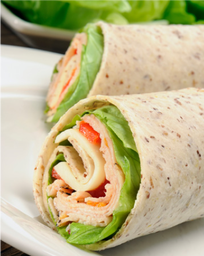 Makes: 1 serving Preparation Time: 5 minutes Ingredients 1 10inch whole wheat flour tortilla 2 tsp light ranch style dressing (or honey mustard) 2 slices deli turkey, chicken or ham 2 Tbsp shredded cheddar cheese 1 large leaf of iceberg, Romaine or Bibb lettuce 2 slices of tomato Instructions 1. Spread ranch dressing on tortilla. 2. Top one half of the tortilla with meat, cheese, lettuce and tomato. 3. Starting with the meat/cheese edge of the tortilla, roll up and enjoy! Notes: serve with a side of baby carrots and cucumber slices Visit Cookspiration or download the app for more great recipe ideas! Writer: Stephanie MacNeill (RD)
That's what you may be saying to yourself if you've seen the news recently. Cricket powder has gone mainstream as it hit Canadian shelves this week. The idea of eating bugs may be new to you, but entomophagy (the consumption of insects) is actually a common practice that has been taking place for tens of thousands of years! It's estimated that insects are part of the traditional diets of around 2 billion people. There are more than 1,900 edible insect species and the most commonly eaten bugs are beetles, caterpillars, bees, wasps, ants, grasshoppers and you guessed it, cricket. If you really think about it, it's not even that big of a stretch. Bugs are arthropods (they don't have an internal skeleton) and are closely related to crustaceans* like shrimp, crab, crawfish and lobster. So crustaceans are really just bugs of the ocean. Also, consider the fact that honey only becomes honey after nectar from the flowers is passed mouth-to-mouth from bee to bee. So if you really think about it, you've been an entomophagist most of your life. But seriously, what's so great about cricket powder?
Crickets have a myriad of health and performance benefits, while also being eco-friendly. Let's first look at some of the health and performance benefits:
Consuming insects is also more environmentally friendly. The resources required to produce 10 grams of cricket powder are 12 times less than the resources needed to produce 10 grams of beef protein. Crickets also require less land and water and produce fewer green house gas emissions than traditionally farmed animals. Over the span of a year, if a family of four ate one meal a week using cricket (or insect) protein, they would save the earth 650,000 litres of fresh water. I'm sure what you're really wondering though, is how they taste. Well, I haven't actually summoned up the courage to try cricket powder myself (although it is on my to-do list). I'm told that cricket powder adds a subtle nutty/earthy flavour...so maybe if someone just told me it was a nut I wouldn't even think twice. So, what do you think? Can you get behind these bugs in the grocery aisle? * A word of caution, people who are allergic to crustaceans and shellfish may have an allergic reaction to crickets. Additionally, if you have a pre-disposed allergy to insect bites or stings you should proceed with caution. Writer: Writer: Stephanie MacNeill (RD) 2017 was a monumental and widely publicized year for feminism with the #MeToo and #TimesUp movements. Making this year’s International Women’s Day theme that much more fitting: #PressforProgress. This year’s theme is aimed at striving for gender parity within society. Although gender parity is a very important aspect of equality and women’s rights, it’s only one aspect. There are many areas we can Press for Progress, within society as a whole and within our personal lives. International Women’s Day should mark the beginning of a year full of pushing for progress for yourself and women everywhere. I challenge you to spend the year following Women’s Day learning to love yourself and your body. Feminism, by definition, is an act of rebellion. It’s the act of rebelling against current societal and patriarchal norms for gender equality. What’s more rebellious than going against everything society tells us about our bodies, and loving who we are? I know firsthand how disheartening looking at any form of media can be to your self-esteem. There are articles and ads everywhere about how to get ready for bikini season, how to make yourself as thin as possible, and how being anything other than in impeccable shape is viewed, each alongside images of scantily clad, unrealistically super fit, modelesque women. On top of it all, cosmetic, supplement, and fitness companies profit from our feelings of poor self-worth. It is in their best interest for us to feel poorly about ourselves. This deserves to change. Here are 4 rebellious acts you can do to Push for Progress and learn to love yourself this Women’s Day: 1. Change how you talk about yourself As women, we have a terrible habit of talking poorly about ourselves and our bodies. We are our own worst critics and we would never say the things we say about ourselves to our friends. They would probably punch us for it. To truly change how we see ourselves, a great first step is to cut out all that negative self-talk. It’s damaging and not beneficial to our self-esteem. Instead, replace those negative comments with things you are proud of doing or skills you possess. 2. Unfollow social media accounts that damage your self-confidence Social media has become a huge part of our lives. We passively consume so much information and images throughout the day because of the amount of time we spend on social media. Because of this, we’re bound to come across accounts or posts that aren’t beneficial to our self-esteem. Whether it be a celebrity that is always posting about the latest diet to lose those extra 5lbs or an account that shames people for being anything other than perfect, you don’t need that in your life. Cut that garbage out of your life and don’t look back. 3. Embrace self-care In the last year, there has been a huge boom for self-care and it’s amazing. Nothing screams love for ourselves and rebellion like providing ourselves with the self-care we deserve. Carve out time in your schedule to unwind and relax by reading, having a bath, knitting, preparing your favourite meal, or ensuring you get enough sleep. Self-care is individualized and non-prescriptive and should include something that’s important to you. Self-care should be a regular part of your lifestyle to help you feel grounded and to realize all you’ve accomplished in a day is worth celebrating. 4. Be proud of your body Our bodies are capable of so many amazing things. It allows us to move the way we want, tells us what it needs, allows us to feel and explore within ourselves, to learn, and our bodies can even bear children. That’s amazing stuff. How we treat our bodies should be a reflection and celebration of all it’s capable of, not punishment for everything it’s been through. Don’t shame your body for showing its age or the scars it bears. We have such unrealistic expectations of how bodies should look and we will go to great lengths to keep it looking young, scar free, flat, toned, and tanned. Why not just be proud of your body for getting you this far?  As International Women’s Day is here, I challenge us all to be aware and cognizant of how we can make progress. And I challenge you to think differently about yourself and what your body is capable of. Take part in the rebellion and flex those feminism muscles with me. Happy International Women’s Day. #PressforProgress Jessica Saloman, MAN, RD Sports Dietitian with ESN and Athlete's Care Yonge and Eglinton and Liberty Village nutritionbyjessicard.com Jessica has a unique interest in women’s health, specifically managing hormonal changes, treating PCOS, gut health, and the female athlete triad. She works alongside women to reach their individualized goals in realistic and manageable ways. I'm so excited to be part of this year's Dietitians of Canada Nutrition Month Campaign! We are celebrating Nutrition Month 2018 by helping Canadians unlock the potential of food to fuel, discover, prevent, heal and bring us together. Dietitians all have one thing in common: we love food! Shocking, right? Whether we are counseling a patient recovering from a heart attack, teaching a cooking class or taking students through a tour of a grocery store, we are all passionate about the potential of food and its connection to health. You will learn so much this month about the amazing potential of food! To kick off Nutrition Month, I'm going to discuss foods potential to fuel. Almost half of all Canadians say they find it challenging to eat a balanced diet because they are so busy. They often skip meals and close to 30% of Canadians say they eat of lot of snacks to stay fueled throughout a busy day. Snacks sometimes get a bad rap. To some, snacking means eating when you're not hungry and to others it means loading up on unhealthier foods like chips, cookies and candy. Nutritious snacks, in the right portion sizes can be part of a healthy eating plan and is a great way to get all the nutrients the body needs each day. Five Smart Snacking Tips: Fueling your body with healthy snacks between meals can help maintain stable blood sugar levels and lead to more consistent energy throughout the day. Snacks can also curb your appetite and prevent overeating at meals. Make snacking a piece of cake (okay, maybe that was the wrong analogy here) with these five tips:
Healthy Snack Ideas: Next time you're looking to fuel up between meals, skip the vending machine or coffee shop and give one of these tasty snack suggestions a try:
Visit Cookspiration or download the app for more un'beet'able snack ideas! Writer: Stephanie MacNeill (RD) |
Categories
All
Archives
November 2021
|
- Home/ News
- About
- Services/ Store
- Media
-
Learning Center
- ESN Athletic and Healthy Lifestyle Learning Center >
-
Professional Learning Center
>
-
The ESN Sports Nutrition Certificate
>
- ESN Learning Center - Sports Nutrition Certificate Level 1 >
- ESN Learning Center Sports Nutrition Certificate Level 2 >
-
ESN Learning Center - Sports Nutrition Certificate Level 3
>
- Module 1 - Periodization for the Athlete
- Module 2 - Nutrition Strategies to Optimize Recovery
- Module 3 - Sports Nutrition for Children and Young Athletes
- Module 4 - Sports Nutrition for the Aging Athlete
- Module 5 - Nutritional Strategies for Injury Prevention and Concussions
- Module 6 - Nutritional Strategies for the Travelling Athlete
- Module 7 - Tournament Nutrition Strategies
-
The ESN Sports Nutrition Certificate
>
- Contact
Proudly powered by Weebly



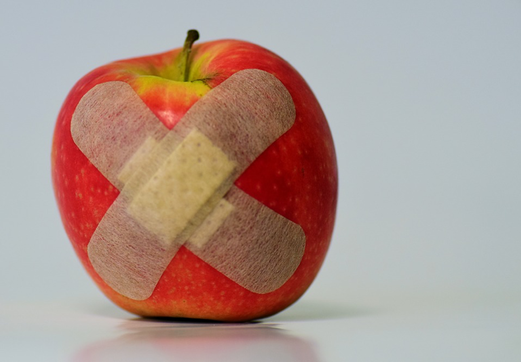

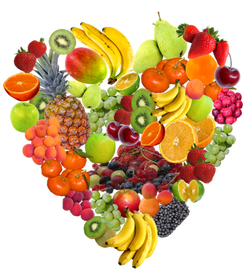



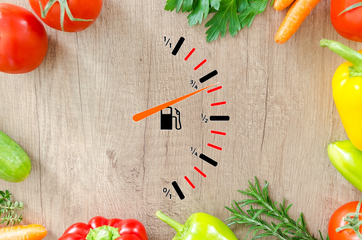



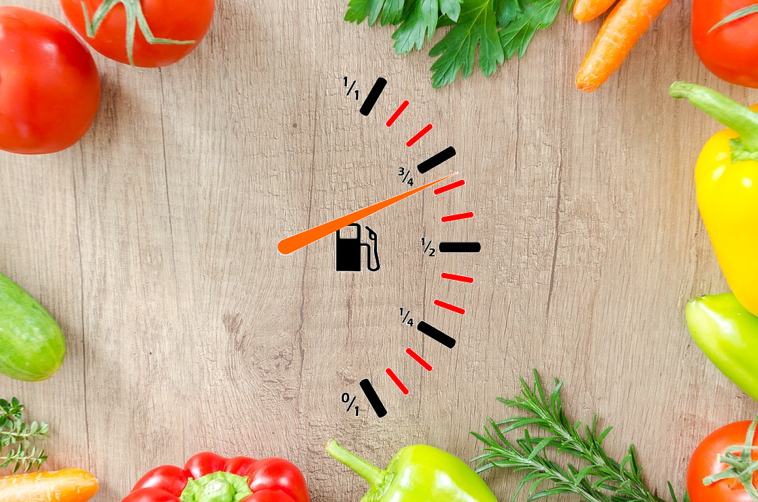

 RSS Feed
RSS Feed